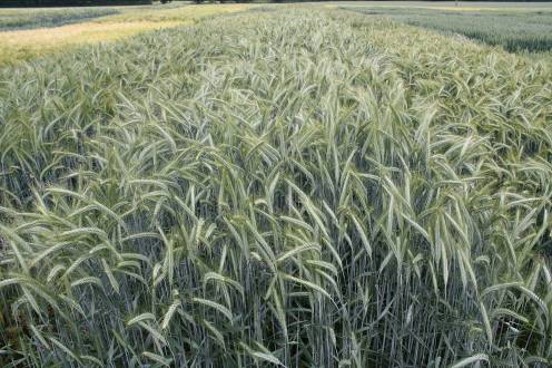Triticale is a crop with untapped potential. Recent research has shown triticale to significantly out yield wheat in trials and on-farm. With its greater take-all resistance than wheat it is a good 2nd cereal option, and has potential to go into feed and bioethanol markets.

Triticale is a cross between wheat and rye. It has been shown to be a high yielding relatively low input crop that can do well in second cereal and less fertile conditions, but its adoption is hampered by lack of a reliable consistent market.
Recommended Content
Content below is from across the PEP community and is not necessarily endorsed by Stewards or by PEP
Connected Content
The major commodity crops in the UK are wheat, barley, oilseed rape, field beans, sugar beet and potatoes, but around half of agricultural land grows grass.
Yellow rust is an important economic disease of wheat. Often occurring more in the east of the UK and areas with mild winters and cool, damp summer weather. A good selection of resistant varieties and well-timed chemical applications can provide effective control of the disease and minimise losses.
Cereal diseases affecting wheat, barley, oats, rye, triticale and maize can be caused by a variety of factors, including fungal, bacterial or viral infections, pests and insects, and environmental stress.
This topic refers to the whole food supply chain, from farm fork, and all the products and services that contribute to food production.
Biofuels have been mandated in road fuel since 2008 to help reduce the fossil carbon emissions from petrol and diesel.
Paper published in Journal of Agricultural Science 2017, vol 155, p261-281 SUM
Flyer produced as result of Innovate UK project with ADAS, Senova, RAGT, Saaten Union, Ensus &
All agricultural produce has to be sold. Use this page to connect to useful resources, organisations and tools to help achieve the best prices. Information is also available on input prices, such as fertilisers.
Take-all is a root disease caused by the soil dwelling ascomycete fungus Gaeumannomyces graminis var. tritici. The fungus is capable of infecting cereal crops such a wheat, barley, triticale and rye however, oats are immune. Take-all can also affect several common grasses such as couch grass and bromes. Another variety of take-all fungus (graminis var. avenae) can infect oats and other cereals, but this is currently very rare in the UK.





